Latest Posts
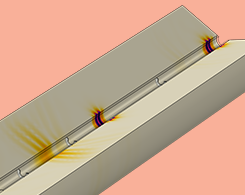
How to Model Piezoelectric Devices as Both Transmitters and Receivers
Certain types of transducers can act as both transmitters and receivers. We demonstrate how to use 2 features for modeling this type of piezoelectric device.

Keynote Video: Improving Synchrotron Light Sources with Applications
For synchrotron light sources, brighter is better: RadiaSoft LLC creates and deploys wave optics simulation applications to design improved vacuum chambers for a synchrotron upgrade project.

How to Model the Interface Trapping Effects of a MOSCAP
Looking to analyze interface trapping effects in a MOSCAP? Learn how to use a feature in the Semiconductor Module that enables you to add charging and carrier capture/release effects to a model.

Happy Birthday, Émilie du Châtelet
Émilie du Châtelet is known for translating Newtonian concepts, discovering a conservation law for total energy, and publishing an expansive work called Foundations of Physics.
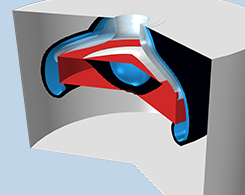
Simulating Multiphase Flow in Porous Media with a Low Permeable Lens
Modeling phase transport helps you study the multiphase flow through a porous medium (such as groundwater through soil).

Keynote Video: Designing Lightning Protection Systems with Simulation
Can lightning strike the same place twice? Either way, it is challenging to model. When designing lightning protection systems, NTS Lightning Technologies turned to multiphysics simulation.

Studying Shock Wave Phenomena with a Shock Tube Application
Shock waves used to be a theoretical problem only. Then, shock tubes enabled experimentation, but it was costly and inefficient. Enter numerical modeling applications.

Keynote Video: Designing Improved Heart Pumps with Simulation
Abbott Laboratories designed “the most complex machine ever implanted into a human being” — an LVAD for heart failure patients — using multiphysics modeling. The result? Saved lives.
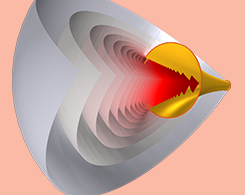
Simulating Nonlinear Sound Propagation in an Acoustic Horn
The Westervelt model enables you to perform complex acoustics analyses, such as modeling the propagation of nonlinear acoustic waves generated by an exponential horn.

Happy Birthday, Ellen Swallow Richards
Ellen Swallow Richards, an American chemical engineer, improved sanitary engineering and was the first woman to attend, graduate from, and teach at the Massachusetts Institute of Technology.

FEM vs. FVM
Finite element methods, finite volume methods, or a hybrid approach: Which is the best choice for CFD? It depends on the fluid flow problem you’re trying to solve.

Why Participate in a Panel Discussion at the COMSOL Conference?
We talk to moderators and panelists from past COMSOL conferences to find out how the industry-specific panel discussions “add a new dimension to the conference!”

Happy Birthday, Sir Horace Lamb
Sir Horace Lamb, a prolific applied mathematician and leader in hydrodynamics research, was one of the first four professors at the University of Adelaide in Australia and was knighted in 1931.

Keynote Video: Optimizing Test Connector Designs with RF Simulation
At Signal Microwave, RF simulation is used to optimize test connector designs quickly and efficiently, giving the organization a unique advantage when it comes to being a small business.

Advancing Technology Helps Keep Ocean Gyres Free of Debris
The Great Pacific Garbage Patch is twice the size of the state of Texas, but advancing technology that relies on the Coriolis effect is kickstarting cleanup efforts.
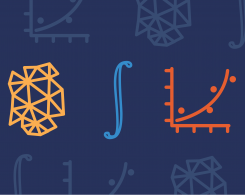
Using Discontinuous Meshes for Conjugate Heat Transfer Modeling
You can use different discontinuous meshes in neighboring domains in COMSOL Multiphysics®. This capability comes in handy, particularly when modeling conjugate heat transfer problems.

Happy Birthday, Edwin Hubble
Edwin Hubble is an observational cosmologist who proved that the universe expands at a constant rate. His namesake Hubble Space Telescope was launched by NASA in 1990 to continue his research.

Global Modeling of a Non-Maxwellian Discharge in COMSOL®
Keep reading for a demonstration of how to model a non-Maxwellian discharge with the Boltzmann equation in the two-term approximation using COMSOL Multiphysics®.
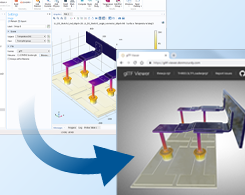
How to Export (and Share) Your 3D Result Plots as glTF™ Files
Wow your project stakeholders by sharing your 3D COMSOL Multiphysics® results as glTF™ files. We show you how to export plots and share them in third-party graphics viewers.
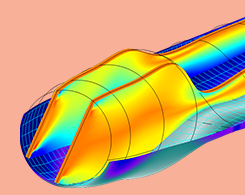
Analyzing Wind Turbine Blades with the Composite Materials Module
Take a look at the dedicated functionality for analyzing thin, layered structures in the Composite Materials Module with this example: a wind turbine blade made of composite materials.
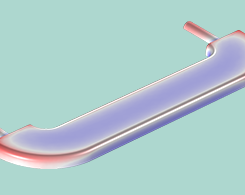
The Art and Science of Electrochemical Plating
Electrochemical plating, a surface finishing technique used in the automotive, electronics, corrosion protection, aerospace, and defense industries, is both an art and a science. Let us explain.

Happy Birthday, Lord Rayleigh
Did you know that Lord Rayleigh was the first person to explain why the sky is blue? He also discovered argon and won the Nobel Prize in Physics.

COMSOL Conference 2018 Lausanne Paper and Poster Awards
Out of the 190+ presentations at the COMSOL Conference 2018 Lausanne in Switzerland, 6 multiphysics simulation projects given Best Paper and Best Poster awards by popular vote.

How to Activate Material in Simulations of Manufacturing Processes
Do you model manufacturing processes such as welding or additive manufacturing? You can activate or deactivate a material in a material deposition simulation using specialized functionality.
